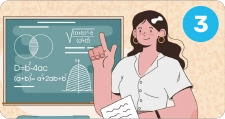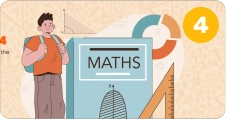Whether you’re just getting into numbers or you’re looking to brush up on your math skills, we’ll walk you through the ins and outs of what makes 27 so unique. So, let’s get started on this numerical adventure and discover the magic behind the number 27. They’re the basic building blocks, and understanding them is as easy as pie.
What Are the Factors of 27?
The factors of 27 are like special keys that unlock the door to the number 27 through multiplication. These keys are the numbers 1, 3, 9, and 27.
Why are they special?
It’s because if you multiply 1 by 27 or 3 by 9, the answer you get is 27. They fit perfectly to form 27, just like pieces in a puzzle. Each factor is a whole number, and when you pair them up and multiply, they seamlessly create the complete picture that is 27 without leaving anything behind – no remainders, no fractions, just a tidy result.
Pair Factors of 27
Pair factors of 27 are sets of two numbers which, when multiplied together, result in the number 27. These come in both positive and negative pairs since the product of two negatives is a positive.
Positive Pair Factors of 27:
Negative Pair Factors of 27:
How to Find the Factors of 27?
To find the factors of 27, follow these simple steps:
Step 1: Begin by dividing 27 by the number 1.
Since 27 divided by 1 equals 27, both 1 and 27 are factors.
Step 2: Try dividing 27 by 2. If the division doesn’t result in a whole number, then 2 is not a factor.
Continue this process with increasing numbers.
Step 3: A factor is a number that divides 27 without leaving any remainder.
If there is a remainder, that number isn’t a factor.
Step 4: When you find a number that divides evenly, you have found a factor pair.
The dividend in this division is the corresponding pair factor.
Step 5: Since 27 is not a perfect square, you’ll only need to check numbers up to the square root of 27, which is a bit more than 5.
Any factor larger than this would have been found as a pair to a smaller factor.
Prime Factorization Method
Prime factorization involves deconstructing a composite number to its prime components, the fundamental prime numbers that, when multiplied, reconstruct the original number. To carry out the prime factorization of 27, one would:
- Find the smallest prime number that divides into 27 without leaving a remainder. Since 27 is an odd number, start with 2. Since 27 isn’t divisible by 2 (it doesn’t result in a whole number), move to the following smallest prime number, which is 3.
- Divide 27 by 3: 27÷3=9. So, 3 is a prime factor of 27.
- Continue dividing: Now take the result from the first division, which is 9, and find prime factors for it. Again, 3 is the smallest prime number that divides 9 evenly (9÷3=3).
- Repeat the process until the result is 1: Since 3 is a prime number and divides 3 evenly (3÷3=1), 3 is the final prime factor.
Thus, the prime factorization of 27 is represented as 3 multiplied by itself twice more, or 3^3, signifying that 27 is composed of a trio of threes.
Summary
In the article “Factors of 27,” readers are invited on an enlightening journey to discover the factors of 27. It explains that the factors of 27 —1, 3, 9, and 27— are the numbers that can be multiplied in pairs to produce 27.
These include both positive and negative pairings, like 1 and 27 or -3 and -9, showcasing the symmetry in multiplication. The article also simplifies the process of finding these factors and details the prime factorization of 27 as 33, which is the number 3 multiplied by itself three times. This summary captures the essence of the article, providing a clear and concise understanding of the factors of 27.
They not only deepen your mathematical understanding but also sharpen your problem-solving skills. Whether you’re in the classroom or facing real-world mathematical challenges, mastering these methods will undoubtedly prove beneficial. So, go ahead and confidently unveil the factors of 27 with these powerful tools in your mathematical toolkit.
Frequently Asked Questions on Factors of 27
1. Which numbers are considered factors of 27?
Ans. The complete set of factors for 27 includes 1, 3, 9, and 27 since 27 is a composite number.
2. How can you express 27 as a product of prime factors?
Ans. You can break down 27 into prime factors as 3 raised to the power of 3, often notated as 3^3.
3. Can you list the positive pairs of numbers that multiply to give 27?
Ans. The positive number pairs that, when multiplied, result in 27 are (1, 27) and (3, 9).
4. Are there negative pairs of numbers that also multiply by 27?
Ans. Indeed, the negative number pairs are (-1, -27) and (-3, -9), which are also multiplied by 27.
5. Does the number 6 count as a factor of 27?
Ans. No, 6 does not count as a factor since it does not divide 27 evenly without a remainder.
Moonpreneur understands the needs and demands this rapidly changing technological world is bringing with it for our kids. Our expert-designed Advanced Math course and Math Quiz for grades 3rd, 4th, 5th, and 6th will help your child develop math skills with hands-on lessons, excite them to learn, and help them build real-life applications.
Register for a free 60-minute Advanced Math Workshop today!



















